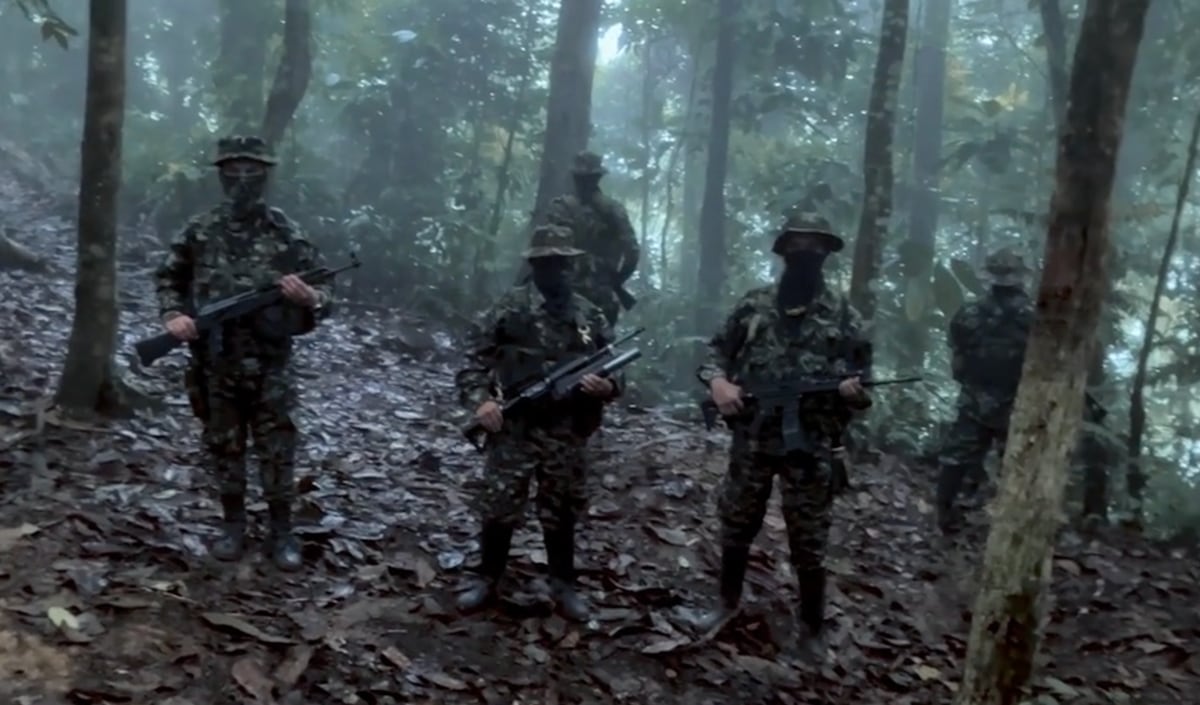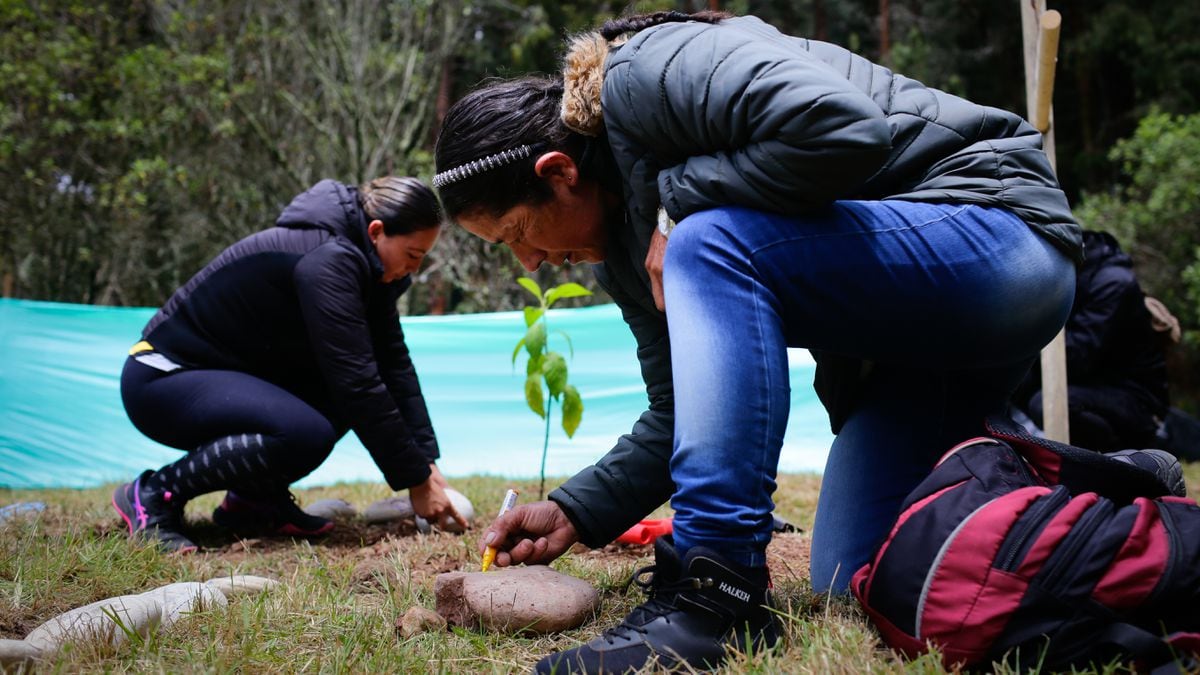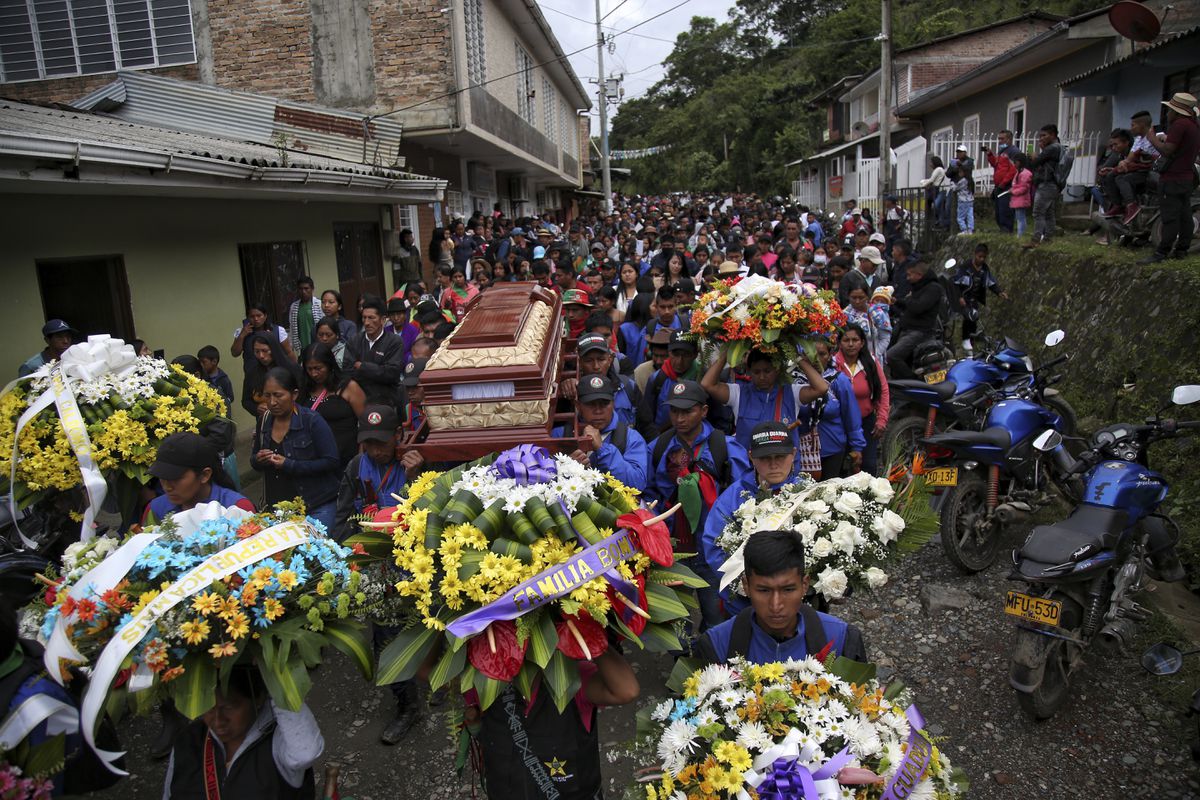The US removes the FARC from the terrorism list 0:40
(CNN Spanish) --
A long story: 57 years after its foundation, and five years after the end of the peace process that led to its demobilization, the Revolutionary Forces of Colombia (FARC) were withdrawn at the end of November 2021 from the list of foreign terrorist organizations of the United States.
And although some dissident sectors of the former guerrillas, who did not accept the Peace Agreement and remain in hiding, were included in the same list, the departure of the FARC is one more step towards the conclusion of the violent civil conflict in Colombia that has almost six decades and has involved different guerrilla groups, paramilitaries and state agents.
Since 1985 alone, 8.2 million internally displaced persons have been counted in Colombia due to this conflict, according to Human Rights Watch, and a total of 267,565 deaths between 1958 and 2020, according to the National Center for Historical Memory of Colombia (CNMH).
But where did the FARC come from, what is their recent history and what state are they in now?
This is what former FARC guerrillas say five years after the peace accords 2:07
History of the FARC in Colombia
(Credit: LUIS ROBAYO/AFP/Getty Images)
The origins of the FARC go back to the period of civil conflict in Colombia between 1948 and 1953 —known as "La Violencia"— that began with the assassination of Jorge Eliécer Gaitán, candidate of the Liberal Party, followed by the revolts framed in the Bogotazo, as remember the (CNMH).
advertising
"This fact would unleash a violent war between the Conservative and Liberal parties that would lead Colombia to experience a decade of political instability and persecution against intellectuals, artists and researchers," says the CNMH.
The military dictatorship of Gustavo Rojas Pinilla (1953-1957) was followed by the return from exile of liberals and conservatives, and in this context the two most important guerrilla groups in Colombia were created in 1964: the FARC and the National Liberation Army ( THE N).
In the case of the FARC, its origins are in Tolima, a rural area that saw a lot of violence and the emergence of self-defense communities in those years, as Juan Guillermo Ferro Medina and Graciela Uribe Ramón point out in their book "El Orden de la War" .
The germ of the FARC would come from one of these groups, according to researchers from the Pontificia Universidad Javeriana, split from the liberals to declare themselves communists, and would mature during resistance to the Colombian army's Operation Sovereignty in Marquetalia.
The words of Íngrid Betancourt to former members of FARC 4:59
In the following decades it would not stop growing, and at its peak in 2008 it is believed that it had some 35,000 members, according to researcher James J. Brittain in his book "Revolutionary Social Change in Colombia."
The long conflict with the Colombian State
The FARC began to organize itself in 1966 as a revolutionary movement dedicated to guerrilla warfare, with its own General Staff, and in 1982 the group adapted its name to the Revolutionary Forces of Colombia-People's Army (FARC-EP) and developed strategies to try to extend their influence outside their territories of origin and try to take power, rebuilt Ferro Medina and Uribe Ramón.
The 1980s also saw the rise of paramilitary groups and drug gangs, which would add to the already existing conflict between guerrillas and the state.
Crimes such as murder, kidnapping —including that of former presidential candidate Ingrid Betancourt, who was held by the FARC between 2002 and 2008—, extortion, and attacks against productive infrastructure became common.
Regarding the role of the paramilitaries, the analyst Claudia López (today the mayor of Bogotá) mentions in her 2013 book "Goodbye to the FARC. And now what?"
three ways of considering them: as part of the counterinsurgency strategy of the Colombian State that later got out of control due to the influence of drug trafficking;
as autonomous groups led by warlords and dedicated to seeking economic resources;
or as autonomous groups with their own ideas of state organization.
The FARC, which entrenched itself in large territories, also turned to drug trafficking at different times in its history to finance itself, and was designated a terrorist organization by the United States and then the European Union.
They investigate the FARC for the explosion in Cúcuta 2:45
During the government of Belisario Betancur in Colombia, an era of rapprochement with the FARC began, known as the La Uribe Accords, which led to the creation of the Patriotic Union party for the political participation of guerrilla fighters.
A string of assassinations against leaders of the Patriotic Union and the Army's subsequent Operation Green House against the FARC base in 1990 would end this peace process, but in the following years there were several more attempts to reach an agreement, amid upsurges in violence and army operations.
The 2012 Peace Agreement and demobilization
(Credit: LUIS ROBAYO/AFP/Getty Images)
After a new failed attempt to agree on peace in 2002, during the government of President Andrés Pastrana, which led to the formation of the Demilitarized Zone, in 2012 the Colombian authorities and the FARC met again to try to put an end to the conflict.
For four years, negotiations between the government of Juan Manuel Santos and the FARC, led by Rodrigo Londoño, alias "Timochenko", advanced in Havana, with Cuba and Norway as guarantors, until in 2016 they finally signed the Peace Agreement.
The ceasefire went into effect on August 29 and the historic signing between Santos and Timochenko took place on September 26.
The Peace Agreement would, however, have one more obstacle: in the plebiscite held on October 2 to endorse the negotiations, the "No" triumphed.
This was the signing of the peace agreement in Colombia 5 years ago 0:43
But after incorporating proposals from the supporters of the "No" to a new version of the agreement, in 2017 the doors were opened to the political participation of the members of the FARC and the demobilization and delivery of weapons began.
According to data from the United Nations Verification Mission in Colombia, as of 2020, 13,394 members of the FARC had been demobilized, 10,293 men and 3,101 women.
dissidence
But not all FARC combatants accepted the Peace Agreement.
Even since its entry into force in 2017, FARC fronts did not accept demobilization, which consisted of going to rural areas, handing over weapons and beginning the transition to legal life.
National Police arrests FARC dissident in Cali 1:21
Known as dissidents, these factions do not receive any of the benefits of the Peace Agreement and continue to be considered actors outside the law.
In 2016, there was special mention of Front 1 "Armando Ríos" (450 members) and Front 7 (300 members), dedicated to drug trafficking and criminal mining in Meta and Guaviare, according to a report by the Colombian Attorney General's Office.
SPECIAL REPORT: The last armed days of the FARC 12:35
In 2017, dissidents even kidnapped a UN official in Colombia.
And in 2019 the veteran FARC guerrillas alias Iván Márquez, Jesús Santrich, El Paisa and Romaña, appeared in a video announced that they were going to dissidence and that they would take up arms again.
In this regard, at the beginning of December, the director general of the Colombian National Police, General Jorge Luis Vargas, said that there was a high probability that "El Paisa", alias Hernán Darío Velásquez Saldarriaga, had died in Venezuela as a result of a internal dispute.
Editor's Note: This article was originally published in January 2022.
FARC


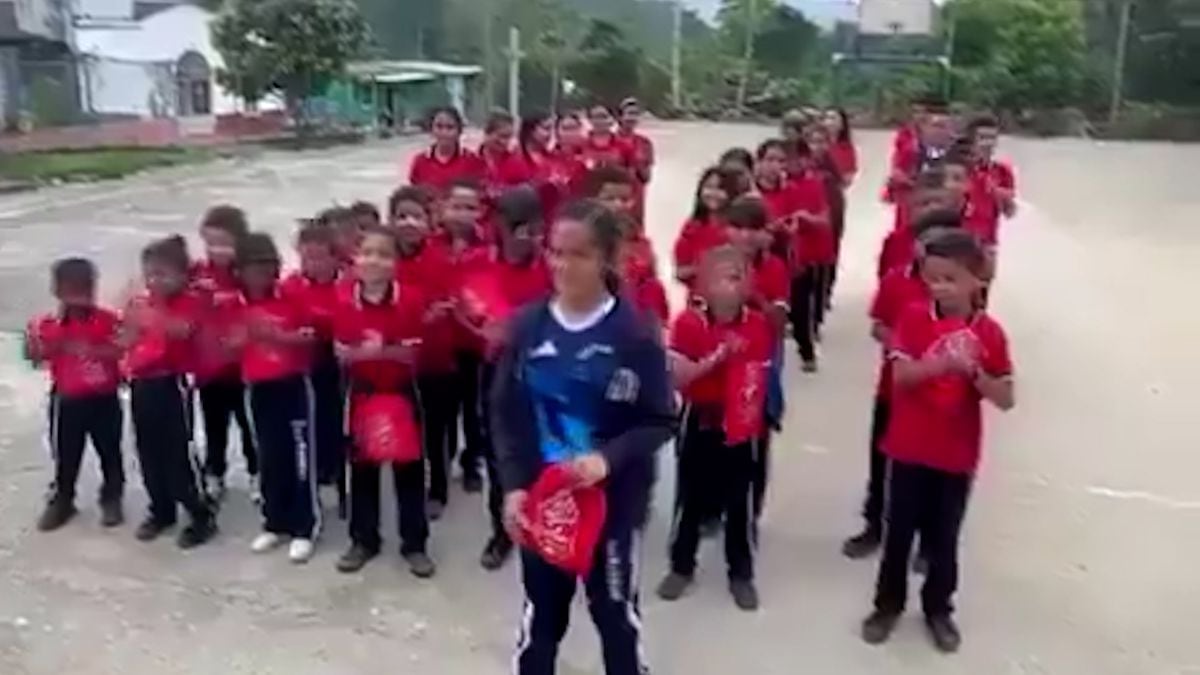
/cloudfront-eu-central-1.images.arcpublishing.com/prisa/62WTZ2YGTKOGTJ6OXJW67JCCME.jpg)
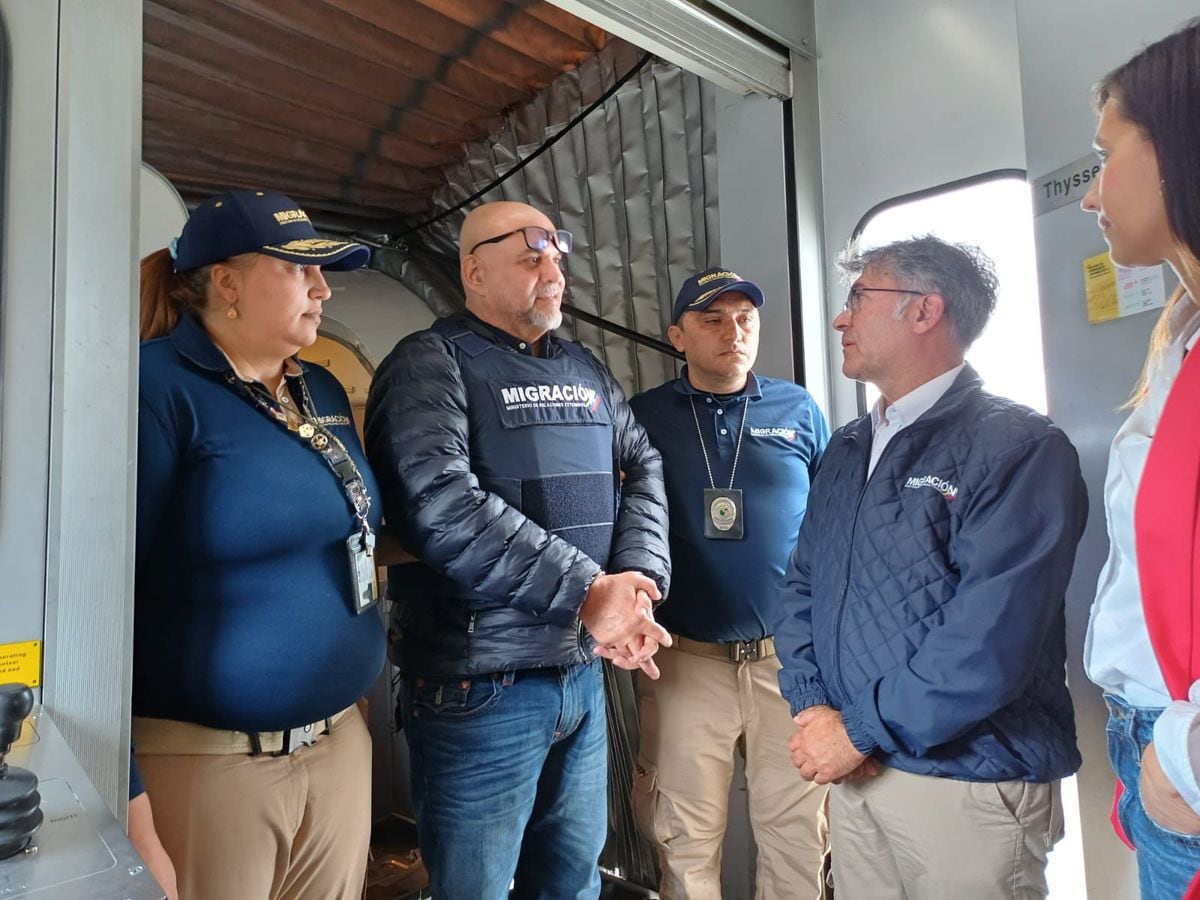

/cloudfront-eu-central-1.images.arcpublishing.com/prisa/YOIAB3IZVZENPLEXJ3PCP7HOI4.jpg)
